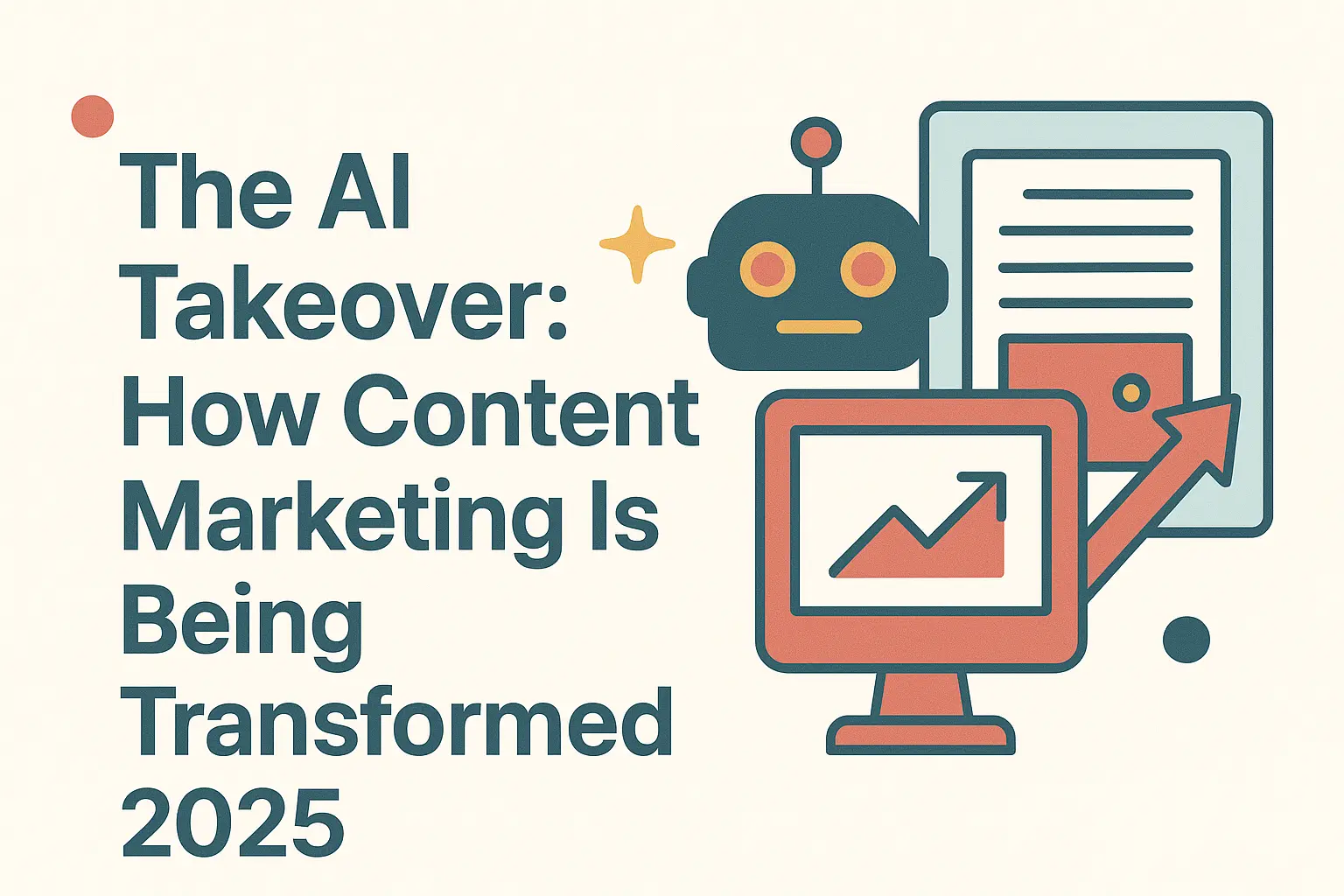Introduction
In 2025, content marketing isn’t what it used to be. The days of manual keyword stuffing, long editorial timelines, and generalized blog posts are fading fast. Instead, we are witnessing the rise of a smarter, faster, and far more personalized approach—one driven entirely by artificial intelligence.
From content creation and strategy to SEO optimization and real-time performance analysis, AI is reshaping how brands communicate with their audiences. If your business hasn’t yet embraced AI in its marketing workflow, now is the time to catch up—or risk falling behind.
In this blog, we’ll explore the real-world transformation AI has brought to content marketing in 2025, along with the tools, strategies, and benefits you need to know to stay relevant in the new digital era.
1. AI in Content Creation: Beyond Just Writing
In 2025, AI tools like ChatGPT-4.5, Jasper AI, and Copy.ai are widely adopted to produce high-quality content in minutes. But AI goes beyond writing—it’s redefining the entire content creation ecosystem.
What’s New in 2025:
– AI video generators (e.g., Sora, Synthesia) create engaging videos from text inputs.
– Voice AI tools produce realistic audio for podcasts, voiceovers, and chatbots.
– AI image creators (e.g., DALL·E, Midjourney) generate custom visuals.
With these tools, a single marketer can handle what once required an entire team.
2. Hyper-Personalization Powered by AI
Consumers in 2025 expect content tailored specifically to them. AI delivers this at scale using data, machine learning, and predictive analytics.
Real Impact:
– Personalized email campaigns adapt in real time.
– Dynamic website content changes based on visitor profiles.
– Recommendation engines, like Netflix and Amazon’s, are now accessible to mid-sized brands.
The result? Higher engagement, lower bounce rates, and increased loyalty.
3. AI-Driven Content Strategy and Planning
Before writing, marketers now rely on AI for data-backed content planning and strategy.
Advanced Tools in 2025:
– Surfer SEO and MarketMuse identify content gaps and valuable keywords.
– Google Gemini AI predicts trending topics and user intent.
– Keyword clustering tools help structure content in pillar-cluster formats.
Entire content calendars can now be generated in minutes with precision.
4. Voice and Visual Search Optimization
With smart speakers and visual search becoming standard, AI helps optimize for how users now search.
What This Means:
– Natural language content optimized for voice searches.
– Automated alt-text and metadata for image discovery via Google Lens.
– FAQ-style and conversational content for smart assistants.
If your content isn’t optimized for these formats, you’re invisible to a growing segment.
5. AI in Real-Time Content Performance Analysis
Say goodbye to waiting weeks for analytics reports. AI provides instant insights in 2025.
Advanced Features:
– Live dashboards suggest optimizations based on user behavior.
– Sentiment analysis helps gauge public perception across channels.
– AI heatmaps reveal how users interact with your site in real time.
This feedback loop allows marketers to pivot instantly and improve outcomes.
6. AI-Generated Interactive Content
Interactive content is hotter than ever—and now, it’s AI-generated and user-personalized.
Use Cases:
– AI chatbots serve as intelligent brand representatives.
– Quizzes adapt based on user input and behavior.
– Infographics are generated with AI-powered data visualizations.
These tools drive longer engagement, higher dwell times, and better conversions.
7. Ethical AI Use and Human Oversight
As AI usage grows, so do concerns around ethics. Smart brands ensure AI is used responsibly.
Key Ethical Practices:
– Disclose when content is AI-generated.
– Check for originality and factual accuracy.
– Train teams to validate and humanize AI-generated outputs.
AI works best when it’s a co-pilot—not a replacement—for human creativity.
8. AI and Multilingual Content Scaling
AI helps brands go global—fast. With advanced translation and voice adaptation tools, reaching new markets is easier than ever.
Benefits:
– Break into global regions without building large localization teams.
– Maintain tone and messaging across multiple languages.
– Use AI voice dubbing for international video content.
The global playing field has never been more accessible.
9. The Role of Generative AI in Visual Branding
AI is reshaping visual content—designs are no longer based on guesswork.
How This Works:
– Tools like Midjourney, Ideogram, and DALL·E deliver instant visual outputs.
– AI supports A/B testing creatives to optimize brand impact.
– Visuals are data-backed and on-brand every time.
This leads to more consistent, faster, and higher-quality brand expression.
10. Preparing Your Marketing Team for AI in 2025
AI success depends on your team’s ability to use it. In 2025, marketers are becoming AI-literate professionals.
Practical Steps:
– Upskill staff in AI tools, prompt crafting, and strategy.
– Integrate AI into platforms like CRMs and CMSs.
– Set up governance to ensure AI is used ethically and effectively.
AI doesn’t replace marketers—it amplifies their potential.
Final Thoughts: Embrace the Change or Fall Behind
AI is no longer the future—it’s the present of content marketing. The most successful brands in 2025 are those that have fully embraced AI as a partner in growth. From hyper-personalized campaigns to real-time analytics, AI is unlocking new levels of speed, creativity, and strategy.
The takeaway? The AI takeover isn’t something to fear—it’s a call to evolve. Those who adapt will lead, while those who hesitate may be left behind.


